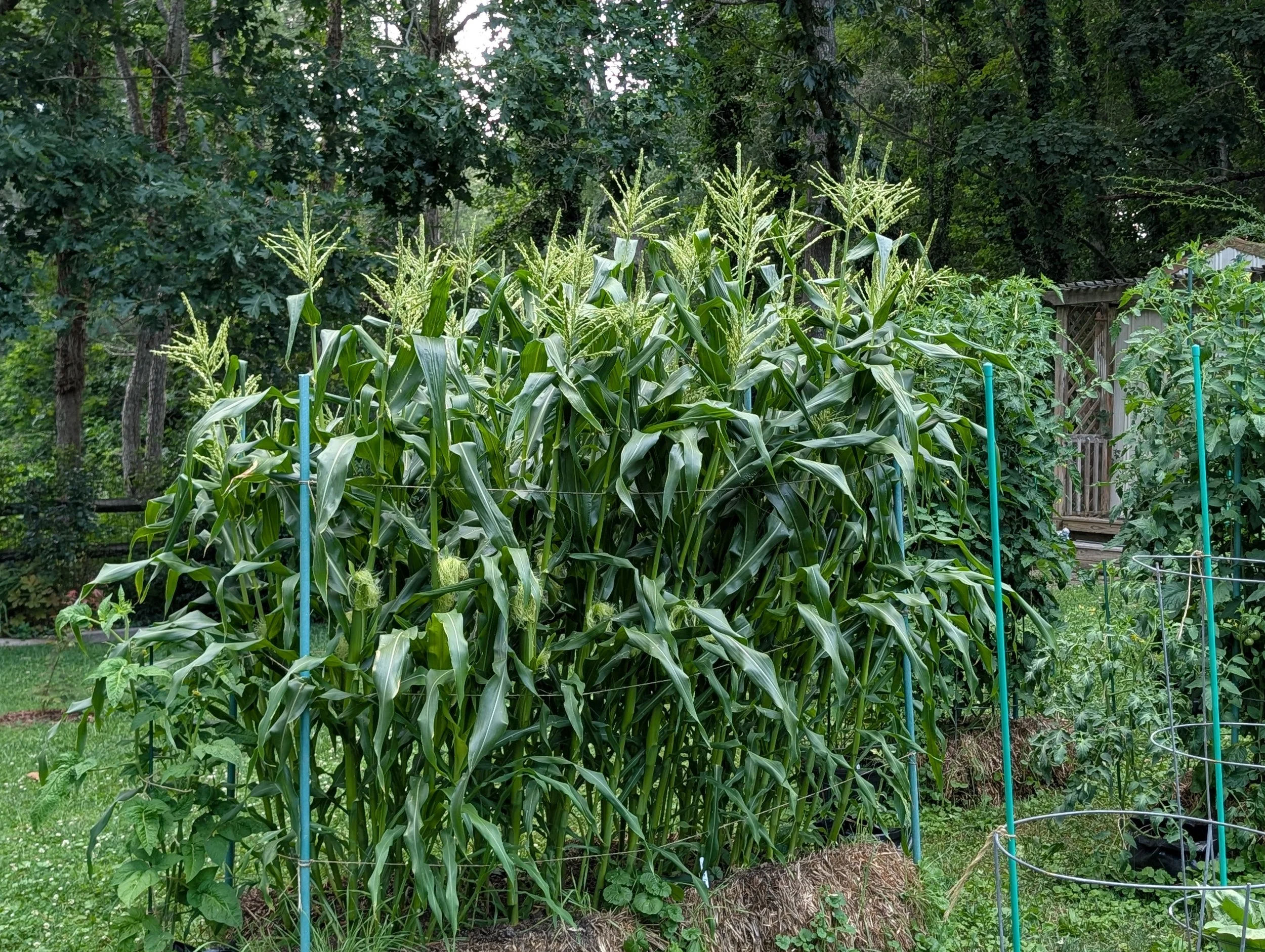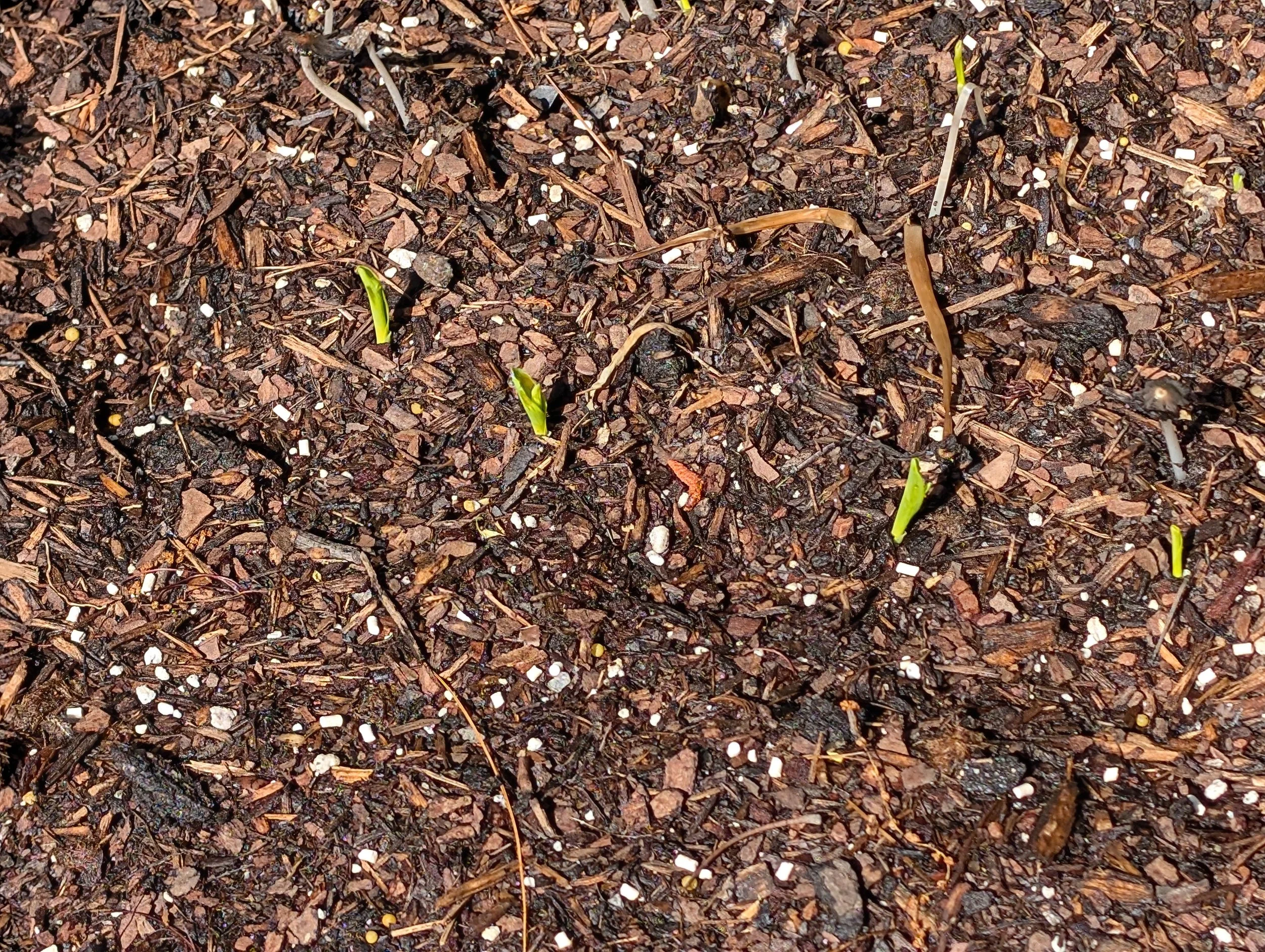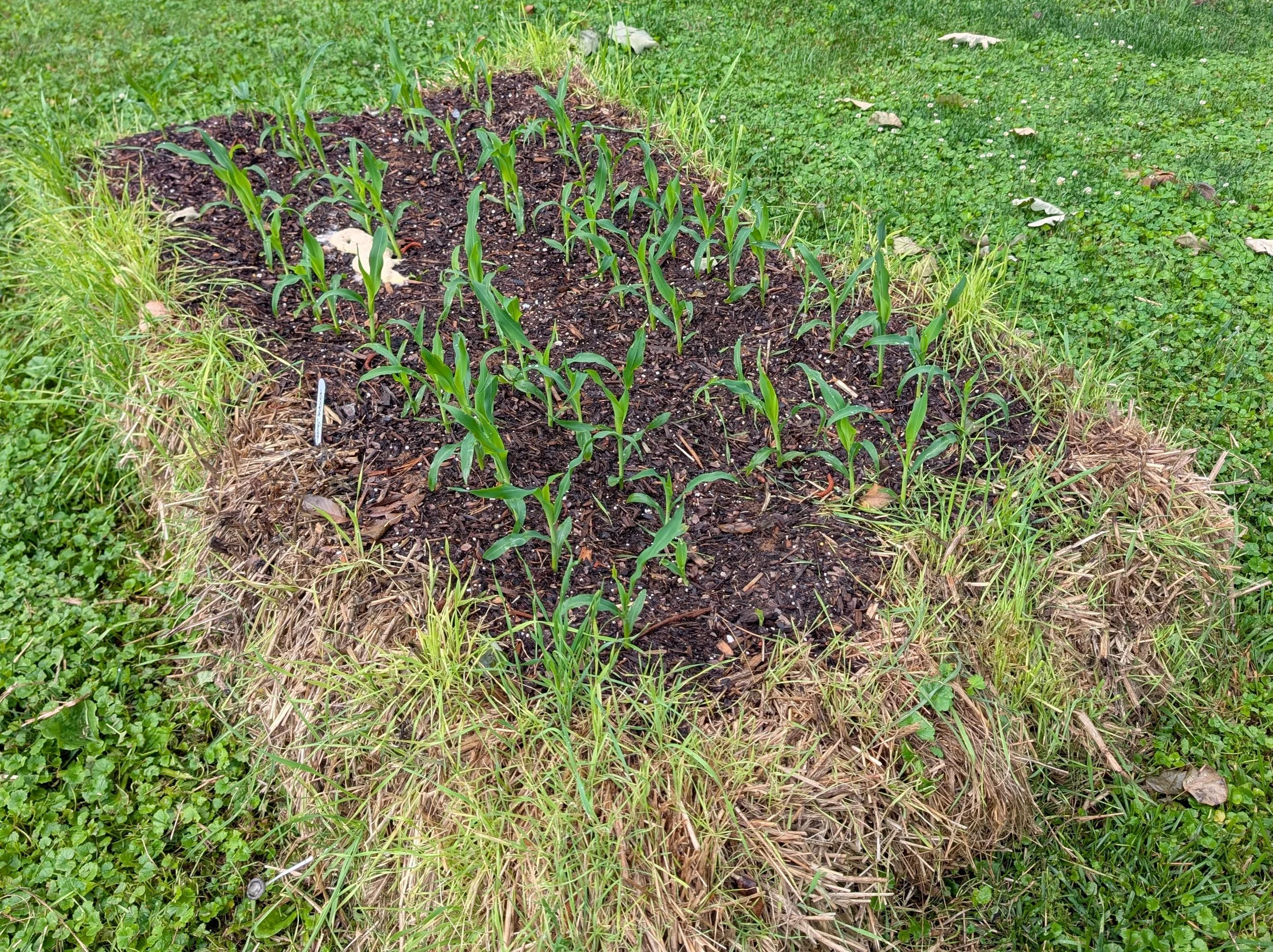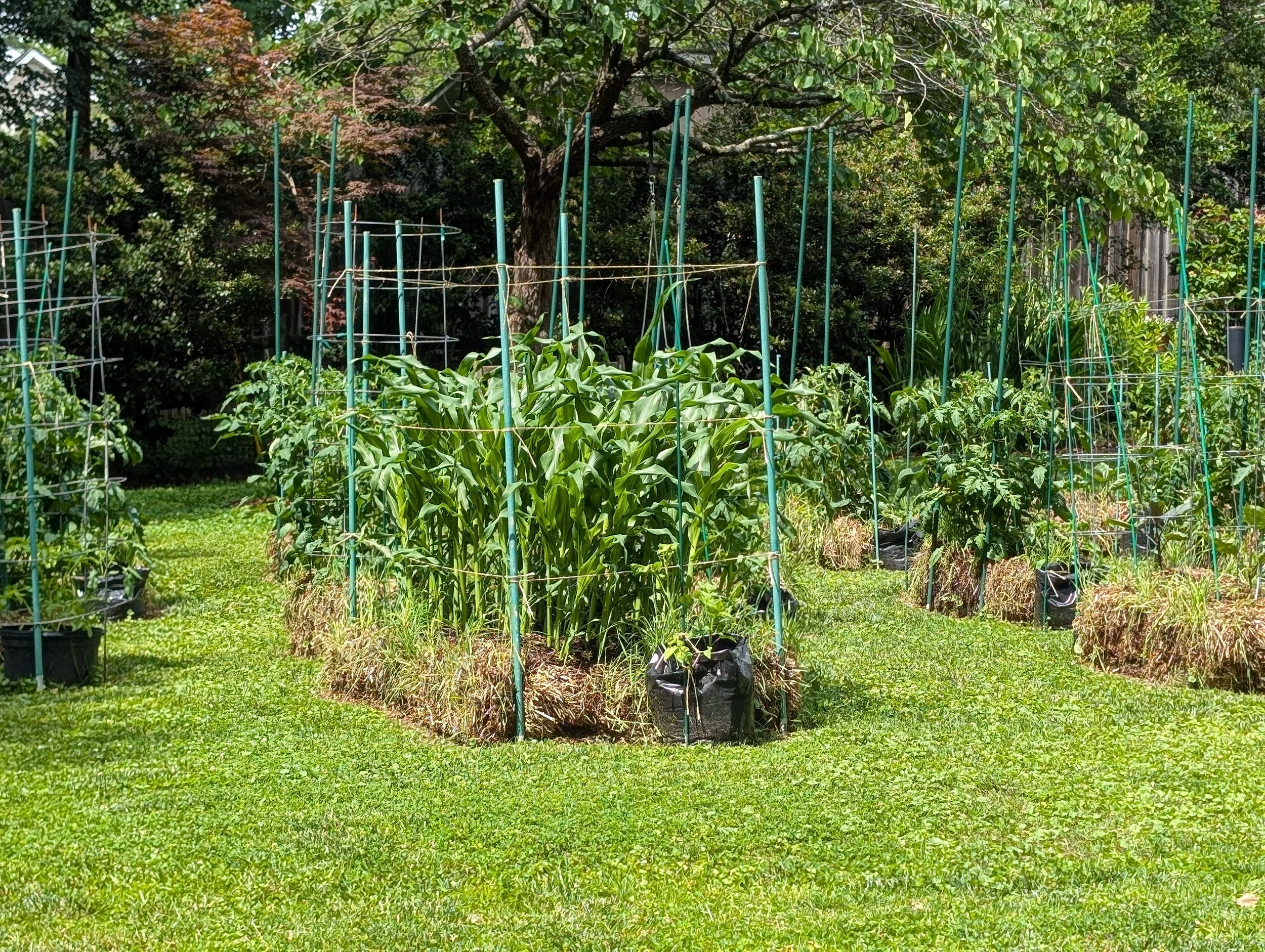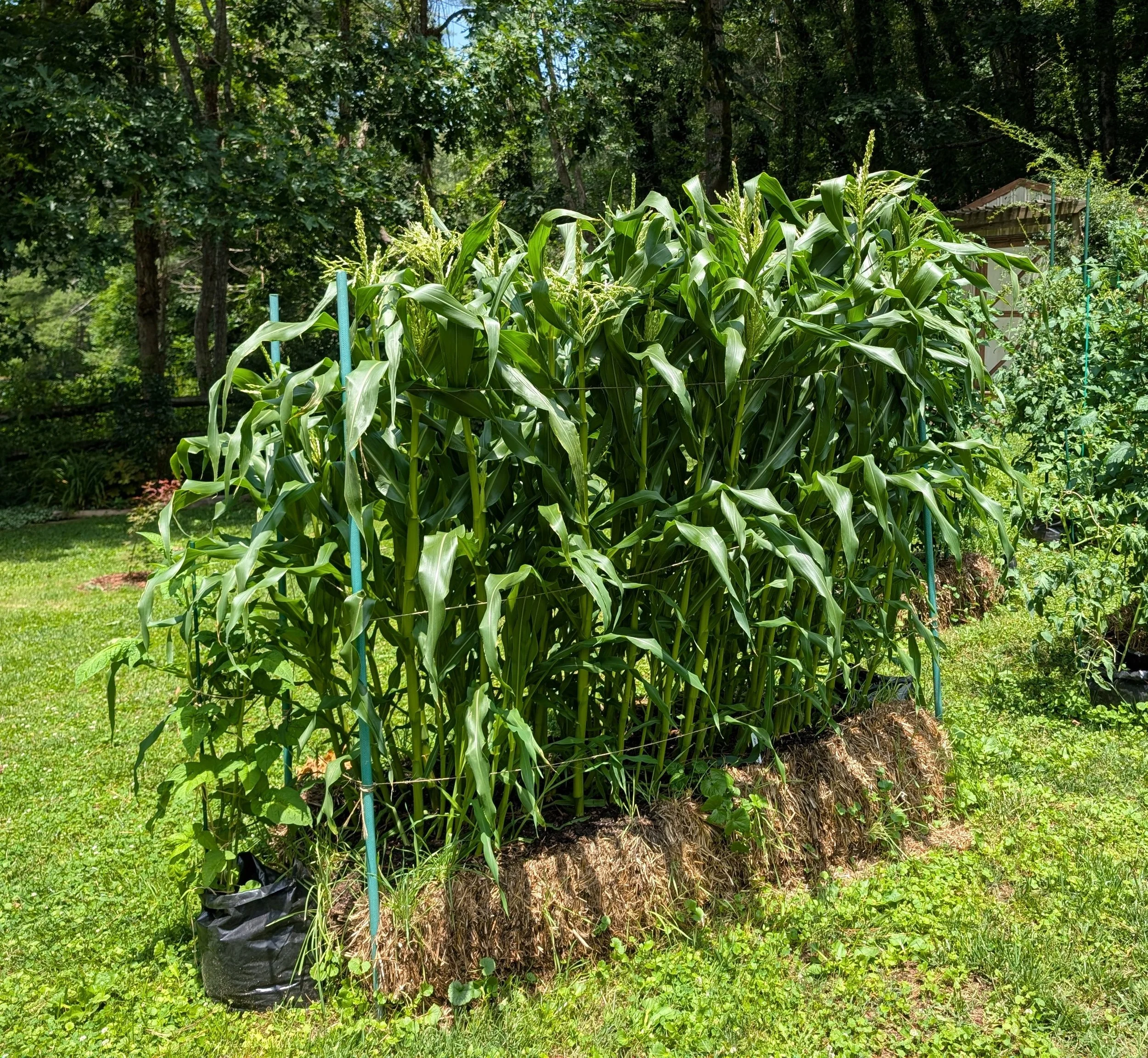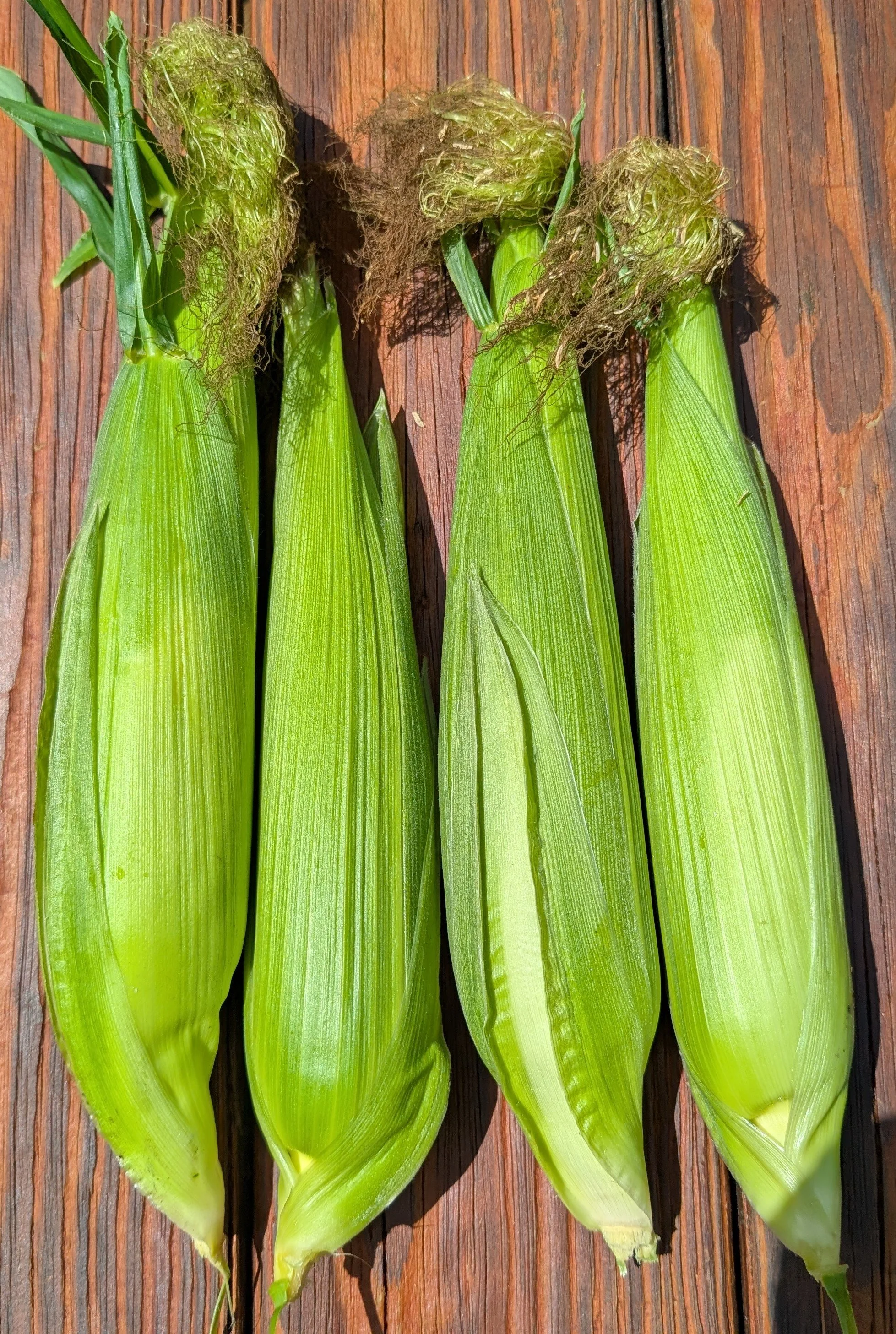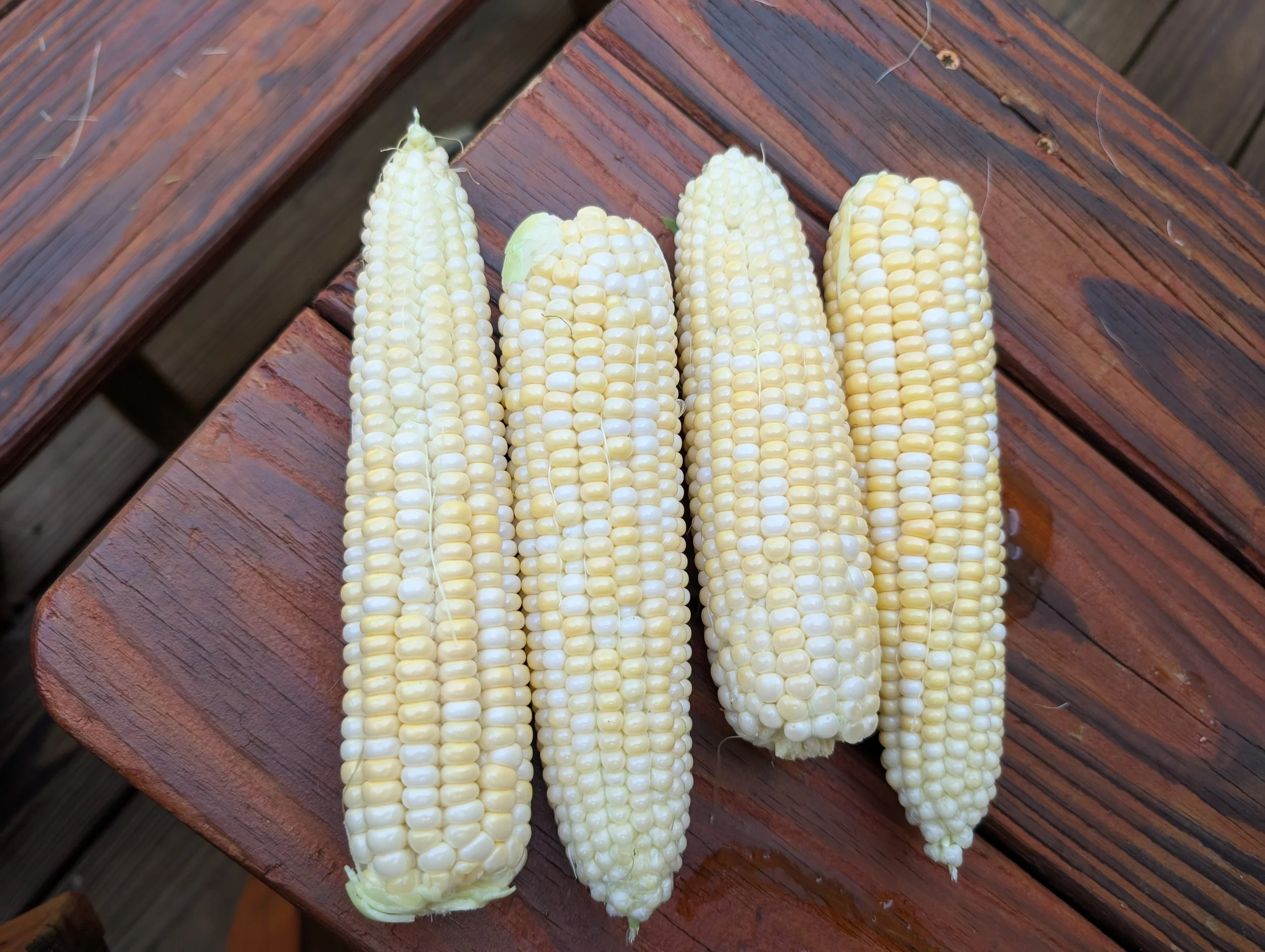June 30 - 2 weeks from harvest. Mission accomplished!
We love great sweet corn, but it has been a long time since we’ve grown it ourselves. It was in our very first garden, in West Lebanon NH in 1981. We grew it in Villanova PA in 1984, and in West Chester PA from 1989-1991. Deer and lack of sufficient sun meant no corn in our Raleigh gardens.
Since strawbales are working so well in our Hendersonville gardens, I decided it was time to take the plunge and give corn a try. Sue and I are so glad that I did, as it has proven to work wonderfully. We’ve been harvesting 4 ears each day for a week, and there is lots more to come.
Corn seedlings emerging within a week of direct seeding
Here is what I did - step by step.
I purchased wheat straw bales in early April, deciding on four in which to grow the corn. I pushed them together to form a big square, positioning them strings down.
They underwent the typical treatment - alternating days of 1/2 cup high nitrogen granular (I use a 29-0-5 lawn starter) and deep watering, followed by 1 cup of 10-10-10 granular.
Throughout the 2 week prep, there is heavy daily watering. The bale treatment was done by mid April, but I decided to wait until early May to direct seed the corn into the bales. This also helped to get through the heavy mushrooming of the bales just after prep completion.
I decided on the corn variety Natural Sweet hybrid and ordered a packet from Pine Tree seeds. There are countless corn varieties, but this one sounded worth trying. We like the yellow/white bicolored corn, and 75 days to maturity sounded about right.
On May 5, the day I chose for planting, I spread a 2-3 inch layer of soil less planting mix over the entire 4 bale block. Whether it was wise or not, I recall seeing how thickly corn is planted in fields, so decided to just go for it. I planted four rows - two in each set of bales. The seeds were spaced 3 inches apart, with rows about 6 inches apart - the corn rows were about 6 inches from the edge. The seeds were pushed into the top layer of soil less mix to the depth of an inch.
After planting, I watered the planted strawbale block thoroughly. In about a week, seedlings emerged, and germination approached 100%.
Corn plants about 2 weeks after planting the seeds.
Realizing that corn gets tall and we get gusty thunderstorms, I felt that driving 6 foot takes into each corner of the block, and twine spanning the stakes at the heights of 1, 3 and 5 feet above the strawbale surface would provide the necessary support.
Since corn is a heavy feeder as well as a thirsty plant, I watered daily and fed weekly with applications of 10-10-10 granular. This is the extent of the care throughout the growing season - feeding and watering. The corner stakes and twine held things up perfectly.
Corn on June 11, about 5 weeks after planting. It has grown beyond the 3 foot twine.
It was so thrilling to see the plants tassel, and not long after that, silks began to show up where the ears were forming. The corn reached about a foot taller than the top twine support, making it a perfect fit.
My main concern was that the close planting would make for poor pollination, which would result in ears with kernel gaps. Once the tassels started to release pollen, I helped things by gently shaking the plants. each silk needs to have a pollen grain touch the end. We get frequent breezes here, and that is the natural pollination method.
Corn clearly tasseling at the end of June
As the calendar turned to early July the tips of the silks started turning a bit brown and ears started to feel like they were filling out nicely.
Corn stalks with silks showing.
The first ears seemed about ripe for the picking on July 11. A few were a bit less mature than ideal, but I was delighted to find that the ears were perfectly filled out. Pollination was complete even with the dense planting.
First 4 ears, harvested July 11
We are now at 17 ears harvested and they only get better and better - probably the best corn we’ve ever eaten. For the cost of 4 straw bales and a packet of seeds - about 30 dollars - I expect a minimum of 40 ears of corn.
I will wait for the final yield to decide on any needed tweaks to the process. If the inner two rows had issues maturing ears, I will aim for more plant separation next year. I will also try out some old favorite heirloom types, such as Hooker’s Indian or Country Gentleman.
Wrapping up this blog, for our 2025 garden, we are loving our string beans, summer squash, cucumbers, eggplants and peppers, and tomatoes are just beginning. But this will always be for me the garden in which corn finally made its triumphant reappearance!
ADDED ON JULY 21
Our current yield is 47 delicious ears of sweet corn - above my self set threshold for success. There may be a few more ears to come that are in the second rows, or from later emerging seeds. However, I have a pretty good idea now about the potential of this method - and a few tweaks I would make next year to make it even more successful.
Planting so much of one variety leads to a concentrated, somewhat overwhelming harvest. More gradual would be better. A reduction in size of the last dozen or so ears also indicates my spacing was too tight.
I am mulling a few changes. Selecting two different varieties of corn with distinctly different days to maturity would spread out the harvest, as well as afford a chance to try 2 additional varieties next year. A different orientation of the bales - using two rows of two bales each, rather than a block of 4 - would reduce the inner plants. Spacing the seeds to 6 inches apart would help ensure each plant got the water and nutrients needed. Here I am, not even 2 weeks into harvesting and eating the corn, and I am already excited about fiddling with the procedure next year with an eye for even more success.
Our first ears

